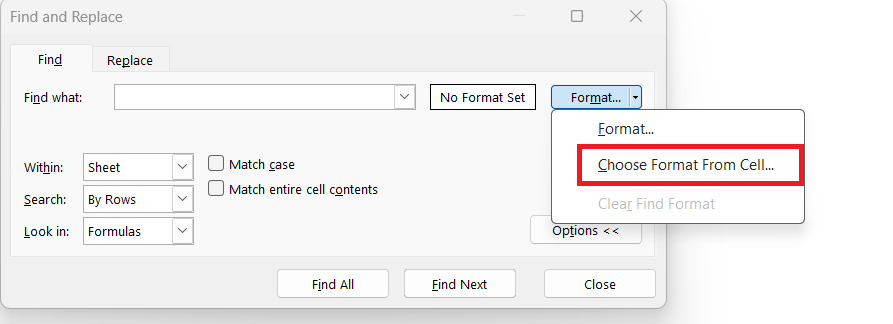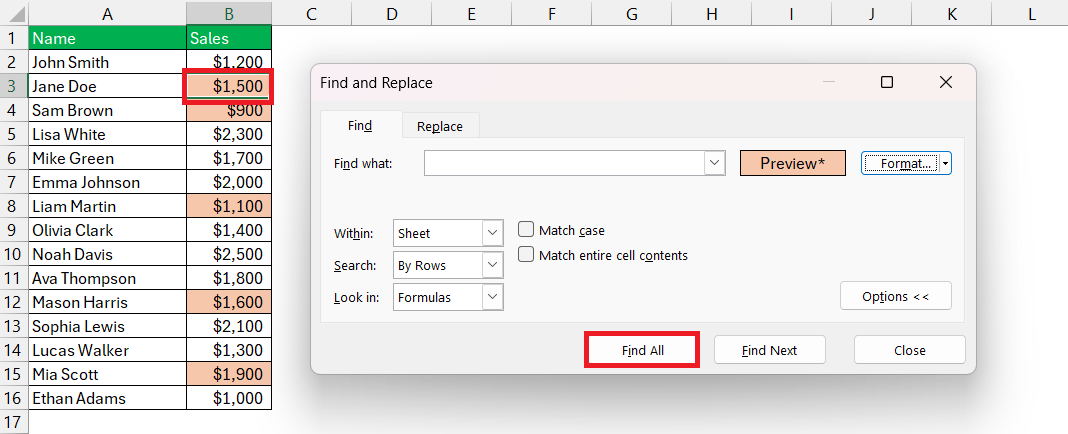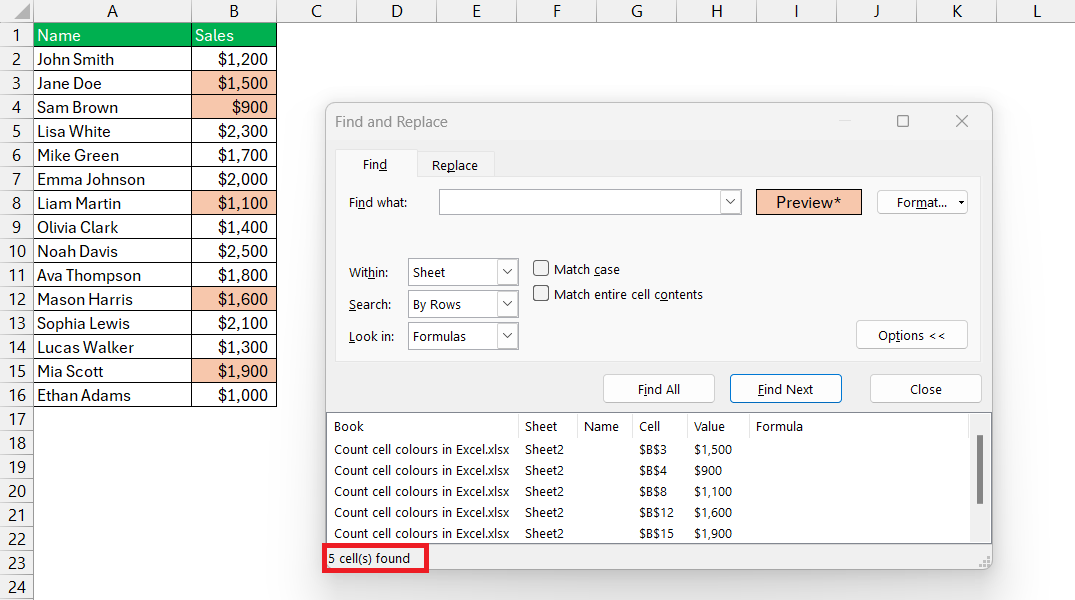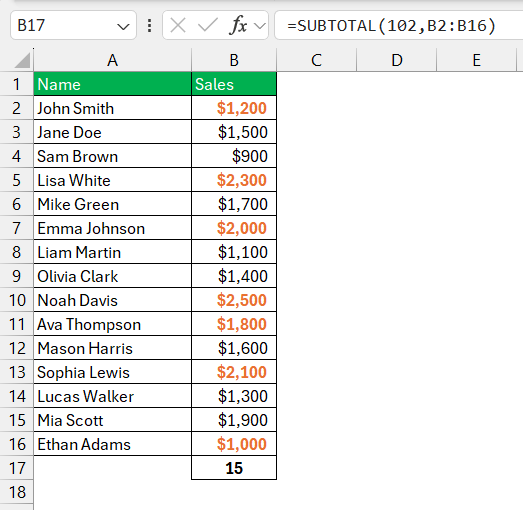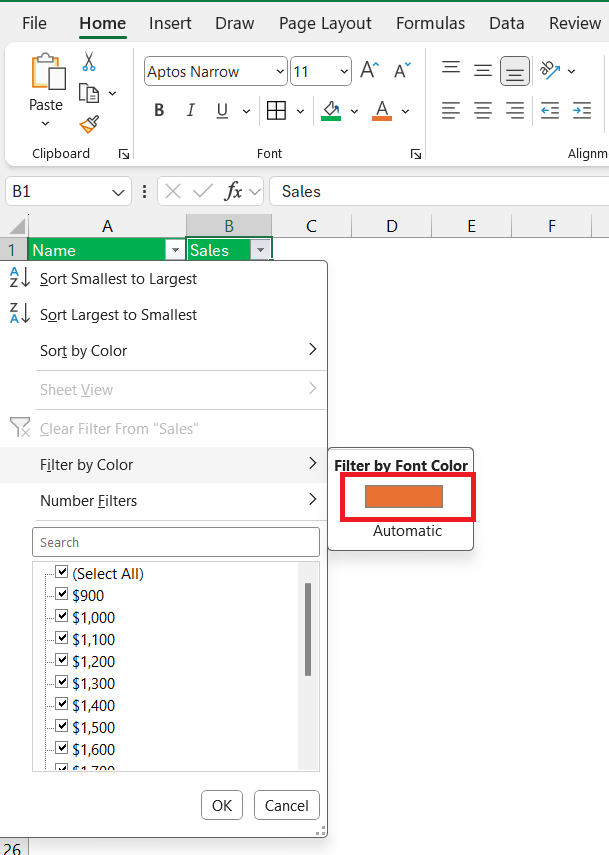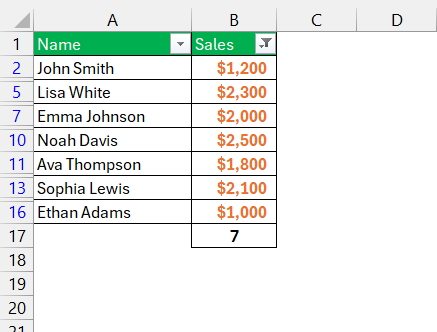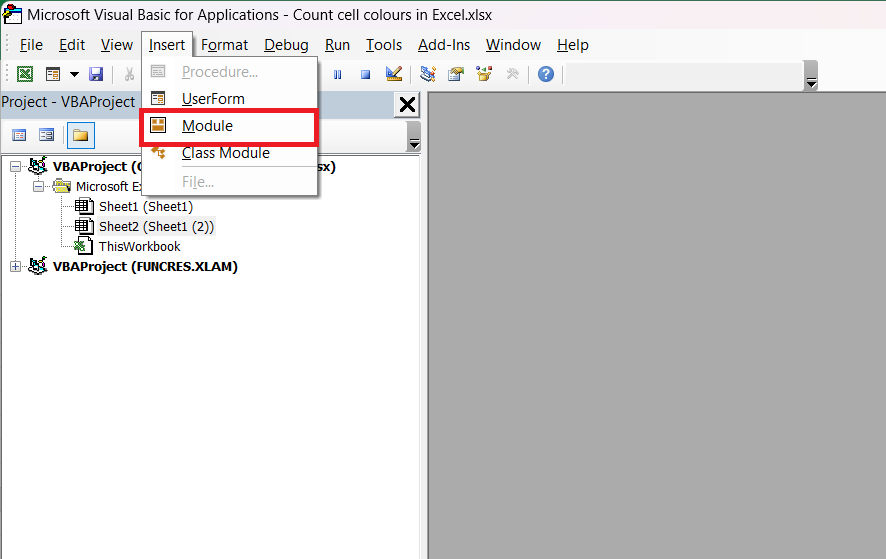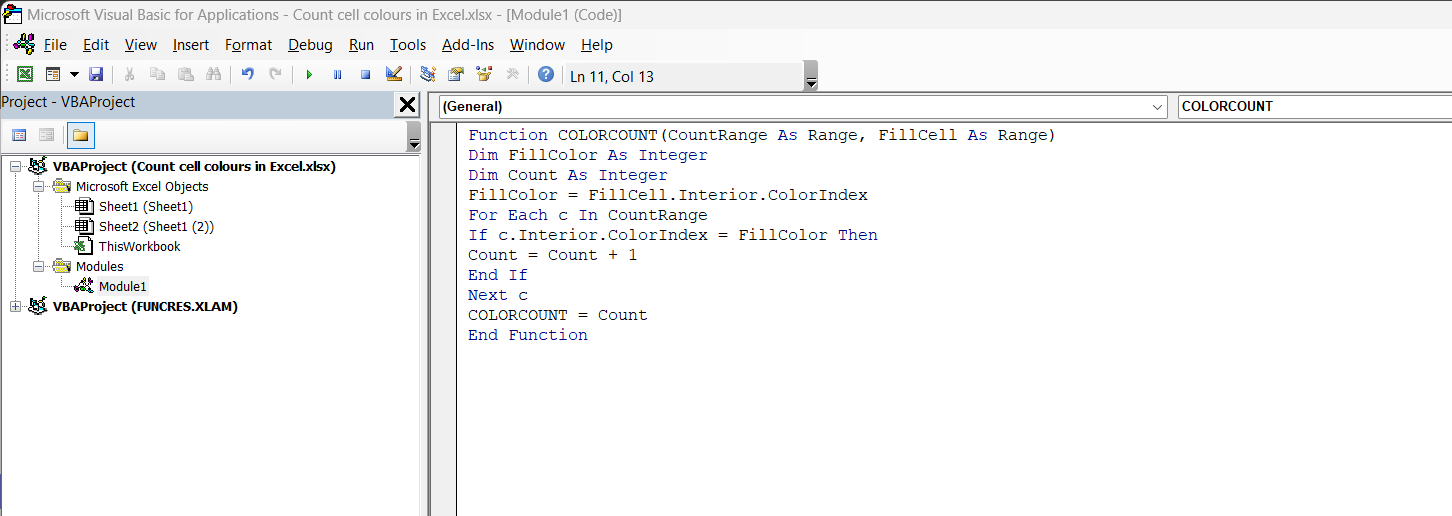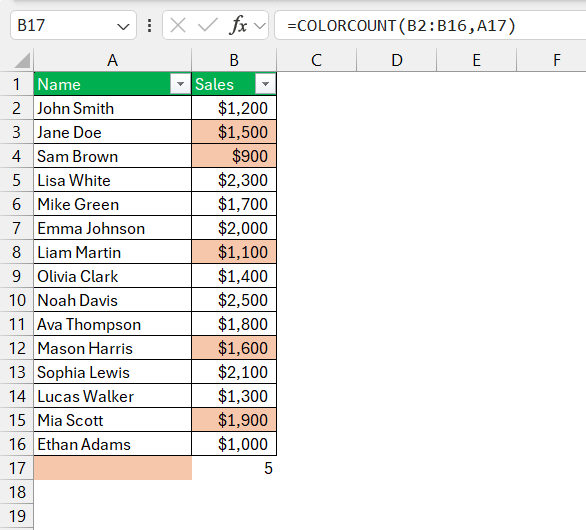Color coding in Microsoft Excel isn’t just about aesthetics; it’s a vital tool for data analysis, enabling users to quickly identify trends, patterns, and outliers. This guide delves into methods to count cell colours in Excel, offering solutions ranging from simple commands to advanced VBA coding. Whether you’re a project manager tracking task statuses, an HR professional managing attendance, or a sales team monitoring performance, mastering these techniques can significantly enhance your data management and analytical capabilities.
Key Takeaways:
- Importance of Color Coding: Color coding in Excel helps categorize and interpret data, making it easier to spot trends and patterns. It enhances data clarity and efficiency across various professions.
- Setting Up for Success: Organize your spreadsheet with clear headers, categories, and a consistent color scheme. Add a legend to explain color meanings to avoid confusion, especially when sharing data.
- Find & Select Method: Use Excel’s Find & Select command to count colored cells without programming. Select the color format and use Find All to tally cells based on color.
- Filter and SUBTOTAL Method: Combine Excel’s filter feature with the SUBTOTAL function to count cells of a specific color. This non-programmatic method allows easy toggling between different color counts.
- VBA for Advanced Users: Use VBA to automate color counting in Excel. Write custom functions to count colored cells with precision and flexibility, tailoring the code to fit various needs and streamline tasks.
Table of Contents
Unlocking the Secrets of Excel: Count Cell Colors
The Importance of Color Coding in Data Analysis
Color coding in Excel is not just about making spreadsheets look pretty; it’s a powerful means to categorize and interpret data quickly. Visual cues like color help you spot trends, patterns, and outliers at a glance. For project managers, it’s a lifesaver for tracking the status of multiple tasks. HR professionals lean on colors to maintain clear attendance records.
Similarly, sales teams gauge performance using colors to identify targets met or missed. By leveraging colors strategically, you not only boost your reporting aesthetics but significantly enhance your analytical proficiency.
Preparing Your Spreadsheet for Color Counts
To set your spreadsheet up for effective color counting, you’ll want to start with a well-structured layout. Ensure your data is organized, with headers and categories clearly defined. Use distinct colors for each data point you plan to track—this could range from task statuses to budget allocations. It’s crucial also to maintain consistency in your color scheme throughout the spreadsheet to avoid confusion.
Before diving into counting, add a legend to explain what each color represents. This is especially helpful when sharing your data with others who might not be familiar with your system. Furthermore, double-check that you’ve applied your coloring consistently, as even slight variations can skew results or cause errors when counting cells later on.
How to Count Cell Colours in Excel
Method 1 – Find & Select
Counting colored cells in Excel can be useful for various data analysis tasks. Although Excel doesn’t have a direct function for this, you can utilize the Find & Select command to accomplish the task. Here’s how you can count colored cells using the Find & Select command:
STEP 1: Open Find & Select from the Home tab, then choose Find.
STEP 2: In the Find and Replace dialog box, open Options and click Format, then choose Choose Format From Cell.
STEP 3: Select a cell containing the fill and click Find All.
STEP 4: Check the count of found cells at the bottom of the dialog box.
By following these steps, you can easily count the number of cells with a specific fill color using Excel’s Find & Select command.
Method 2- Filter and SUBTOTAL Method
When you want to count cells based on color and prefer a solution that doesn’t require programming skills, the Filter and SUBTOTAL function is your go-to option. Here’s how you can do it:
Imagine you have a range of cells you’re working with—let’s say B2:B16. Start by clicking on the cell where you want the count to appear. Now, enter =SUBTOTAL(102,B2:B16) and press Enter. The number 102 tells Excel that you’re using the COUNT function within SUBTOTAL to tally your entries.
Next, apply the filter feature by selecting the column header and navigating to the Home tab. Choose “Sort & Filter,” then “Filter.” By clicking the newly appeared filter button next to your column header, you’ll be able to select “Filter by Color.”
Once you select a color, your subtotal cell will display the count of cells with that specific color.
Remember, this method comes in handy for a quick and straightforward count and also allows you to toggle between different color counts by simply selecting another color from the filter options.
Method 3 – Leveraging VBA Code to Count Colored Cells
If you’re comfortable with a bit of coding, using VBA (Visual Basic for Applications) code can be a real game-changer for counting colored cells in Excel. It provides a level of automation and flexibility that standard Excel functions lack. Here’s a brief insight into how to make it work:
STEP 1: Initially, access the VBA editor by pressing ALT + F11.
STEP 2: Create a new module by choosing ‘Insert’ followed by ‘Module’.
STEP 3: This opens up a new window where you’ll paste the code. You would then use a function like the one provided in the research:
Function COLORCOUNT(CountRange As Range, FillCell As Range)</pre> </div> <div class="ql-code-block" data-language="plain">Dim FillColor As Integer</div> <div class="ql-code-block" data-language="plain">Dim Count As Integer</div> <div class="ql-code-block" data-language="plain">FillColor = FillCell.Interior.ColorIndex</div> <div class="ql-code-block" data-language="plain">For Each c In CountRange</div> <div class="ql-code-block" data-language="plain">If c.Interior.ColorIndex = FillColor Then</div> <div class="ql-code-block" data-language="plain">Count = Count + 1</div> <div class="ql-code-block" data-language="plain">End If</div> <div class="ql-code-block" data-language="plain">Next c</div> <div class="ql-code-block" data-language="plain">COLORCOUNT = Count</div> <div class="ql-code-block" data-language="plain">End Function
STEP 4: After inputting the code, close the VBA editor. In your worksheet, type =COLORCOUNT(range, cell_with_color) in the cell where you want the count to appear, replace ‘range’ with your cell range (e.g., B2:B16) and ‘cell_with_color’ with a reference to a cell with the color you want to count. Press Enter, and voilà – the number of cells with the specified color fills your selected cell.
The power of VBA is that once you have this function established, you can repurpose it across any workbook, tailor it further, count multiple color indexes, streamline Excel tasks, and enhance your productivity significantly.
Please note that VBA scripts do not work in all versions of Excel; specifically, Excel Online does not support them. Make sure your Excel environment supports VBA before you get started.
FAQ: Expert Answers to Your Excel Color Count Queries
Q1. What is the easiest way of counting colored #cells in Excel?
The easiest method for counting colored cells in Excel is to use the COUNTIF function in combination with filtering the dataset by color. After applying a filter, you can use the =SUBTOTAL(102, range) formula, which counts visible cells in a specified range and ignores the ones that are hidden by the filter. This way, only cells filtered by the specific color are counted.
Q2. Can I count cells with multiple colors using standard Excel functions?
No, standard Excel functions like COUNTIF cannot differentiate between cell colors. To count cells with multiple colors, you’d either need to use VBA to create a macro that can differentiate and count them or use helper columns to categorize each color, which can then be counted with standard functions.
Q3. How do I create a custom function to count colored cells?
To create a custom function to count colored cells in Excel, you’ll need to use VBA. Press ALT + F11 to open the Visual Basic Editor, insert a new module, and write a function that loops through a range and counts cells based on their color property. Then, use the function in your Excel sheet like any other formula.
Q4. Is there a non-VBA method to count by cell color in Excel?
Yes, you can use the Find & Select method and then choose Format from cell. You can then select a cell containing the formatting and press Find All. Ij the dialog box, you will find the count cell color at the bottom.
Q5 .Can you do a formula in Excel based on color?
Yes, you can create a formula in Excel based on color, but not with built-in functions. You’ll need to use VBA to write a user-defined function (UDF) that accesses the color of a cell and performs calculations, or use a third-party add-in designed for color-based computations.
John Michaloudis is a former accountant and finance analyst at General Electric, a Microsoft MVP since 2020, an Amazon #1 bestselling author of 4 Microsoft Excel books and teacher of Microsoft Excel & Office over at his flagship MyExcelOnline Academy Online Course.


